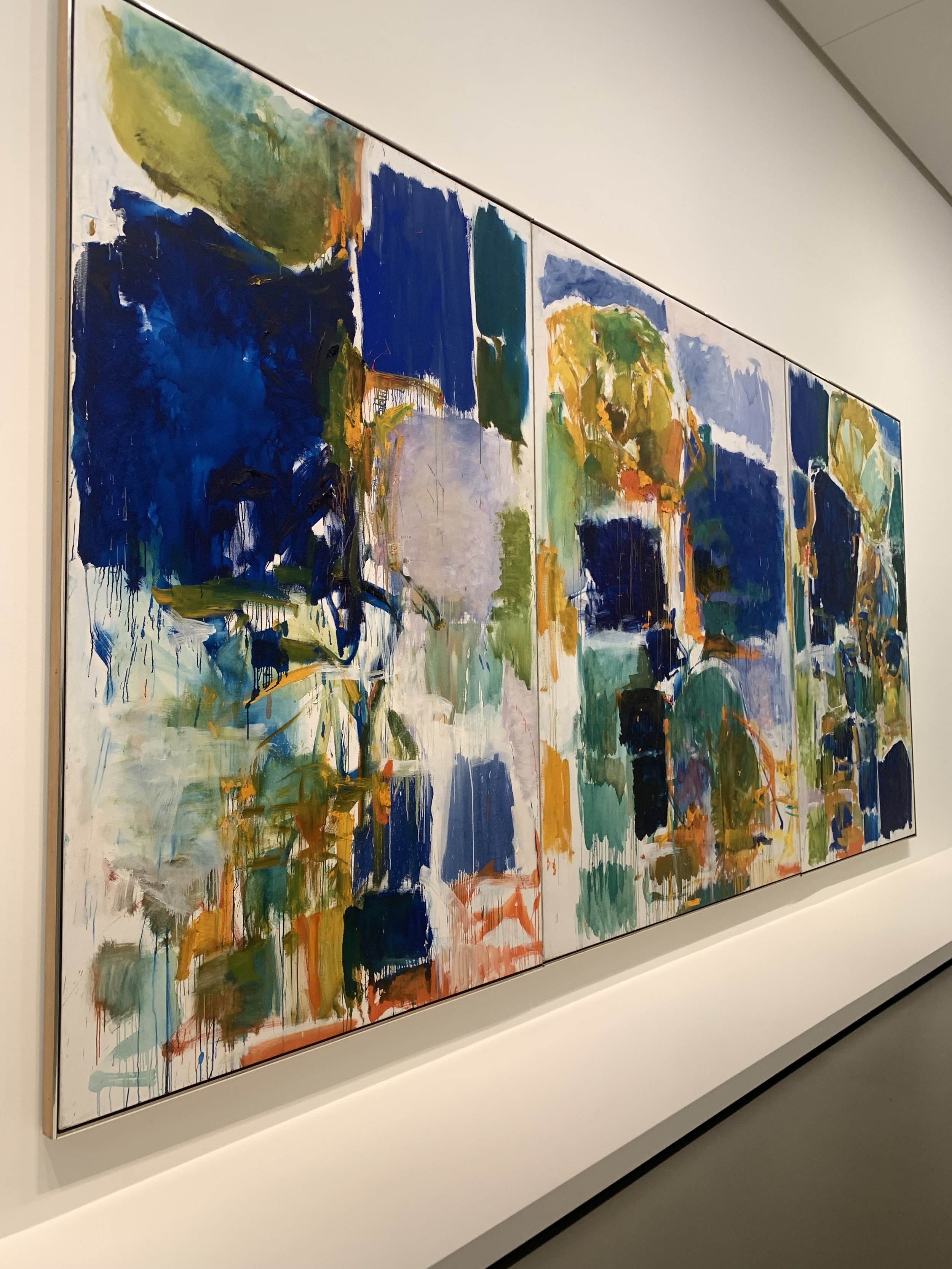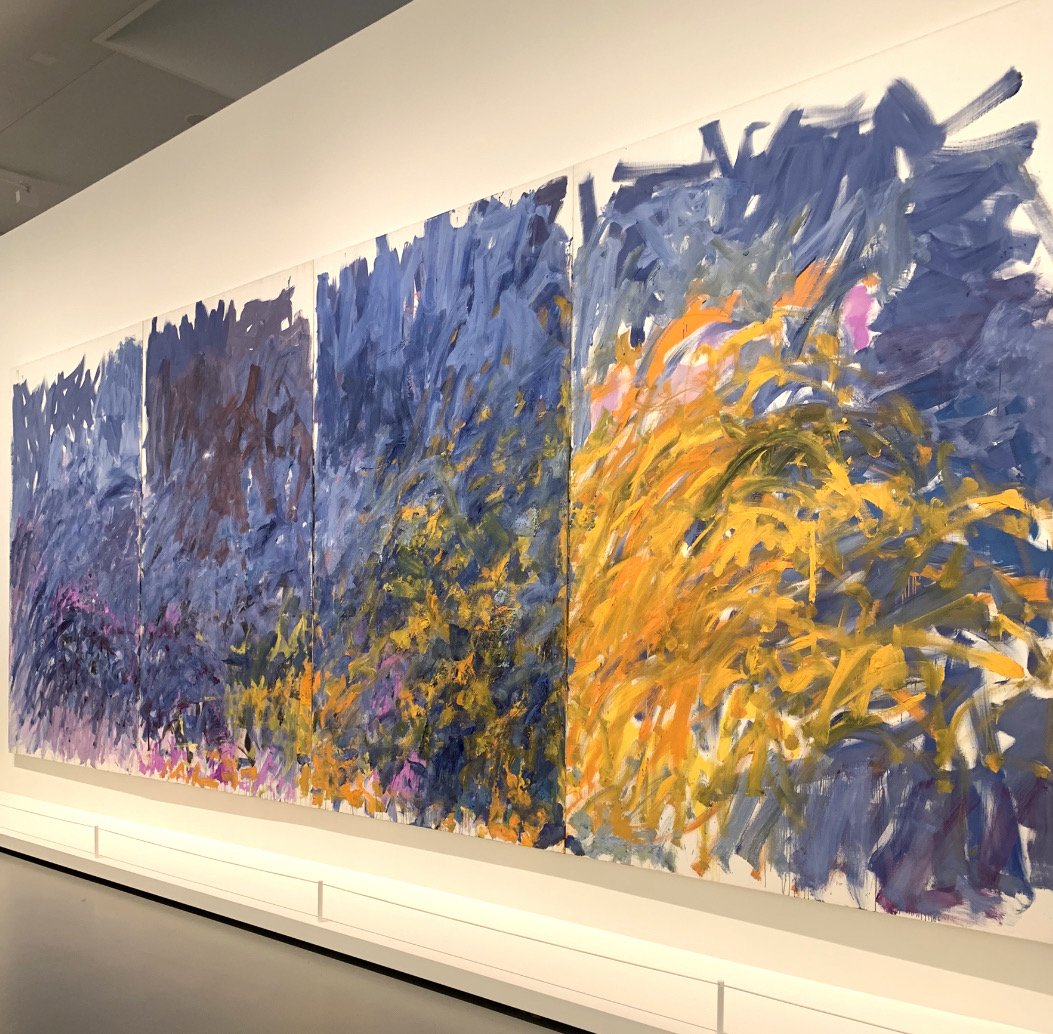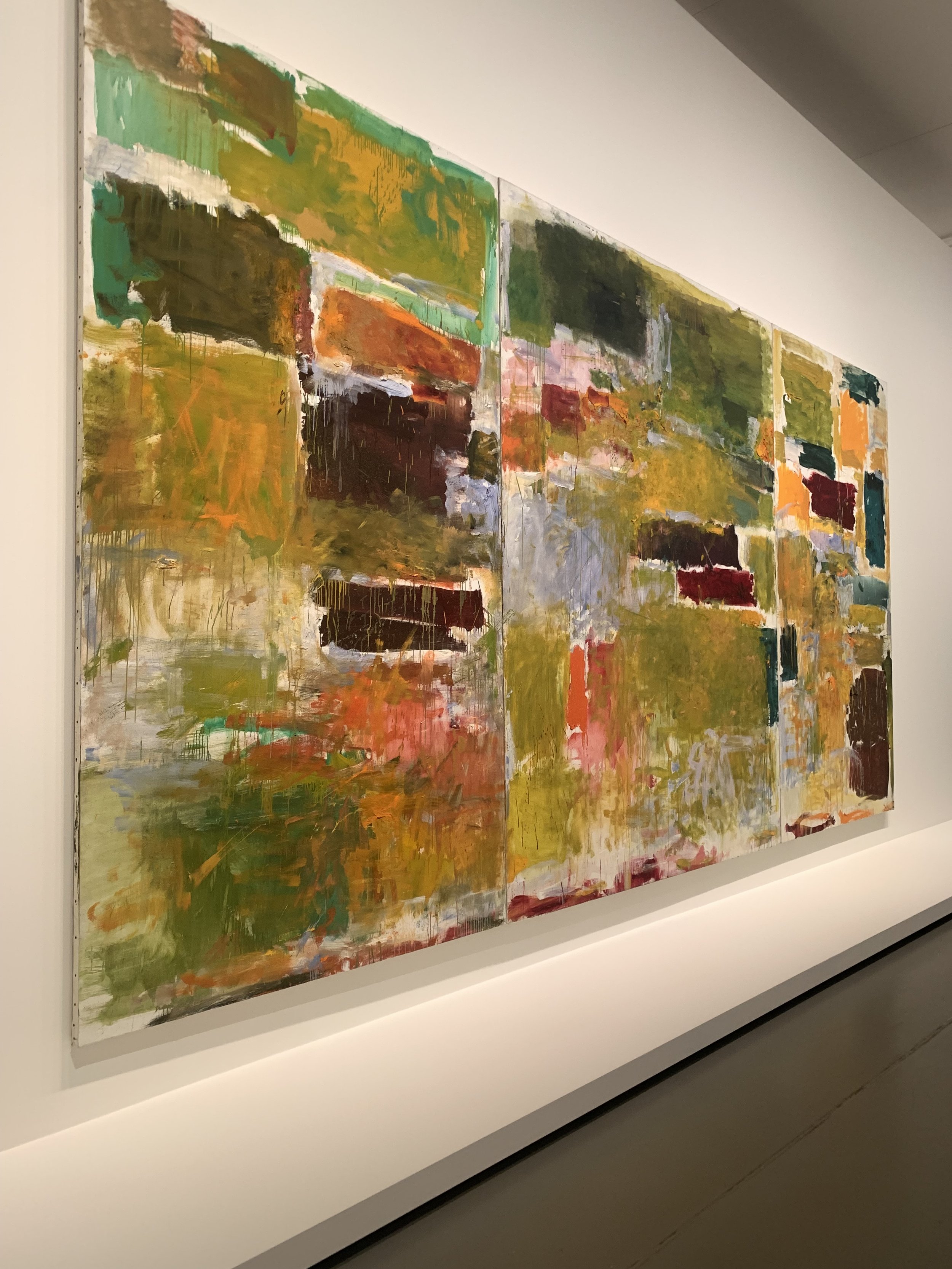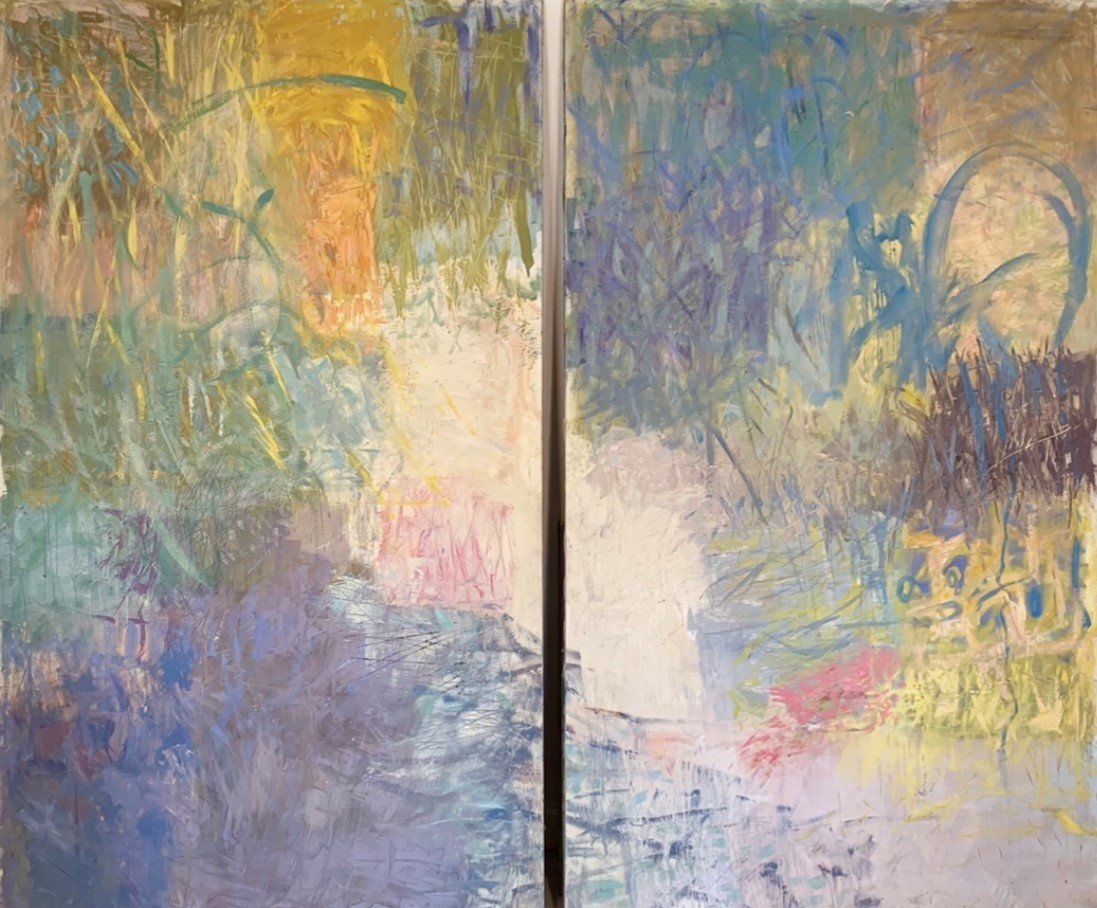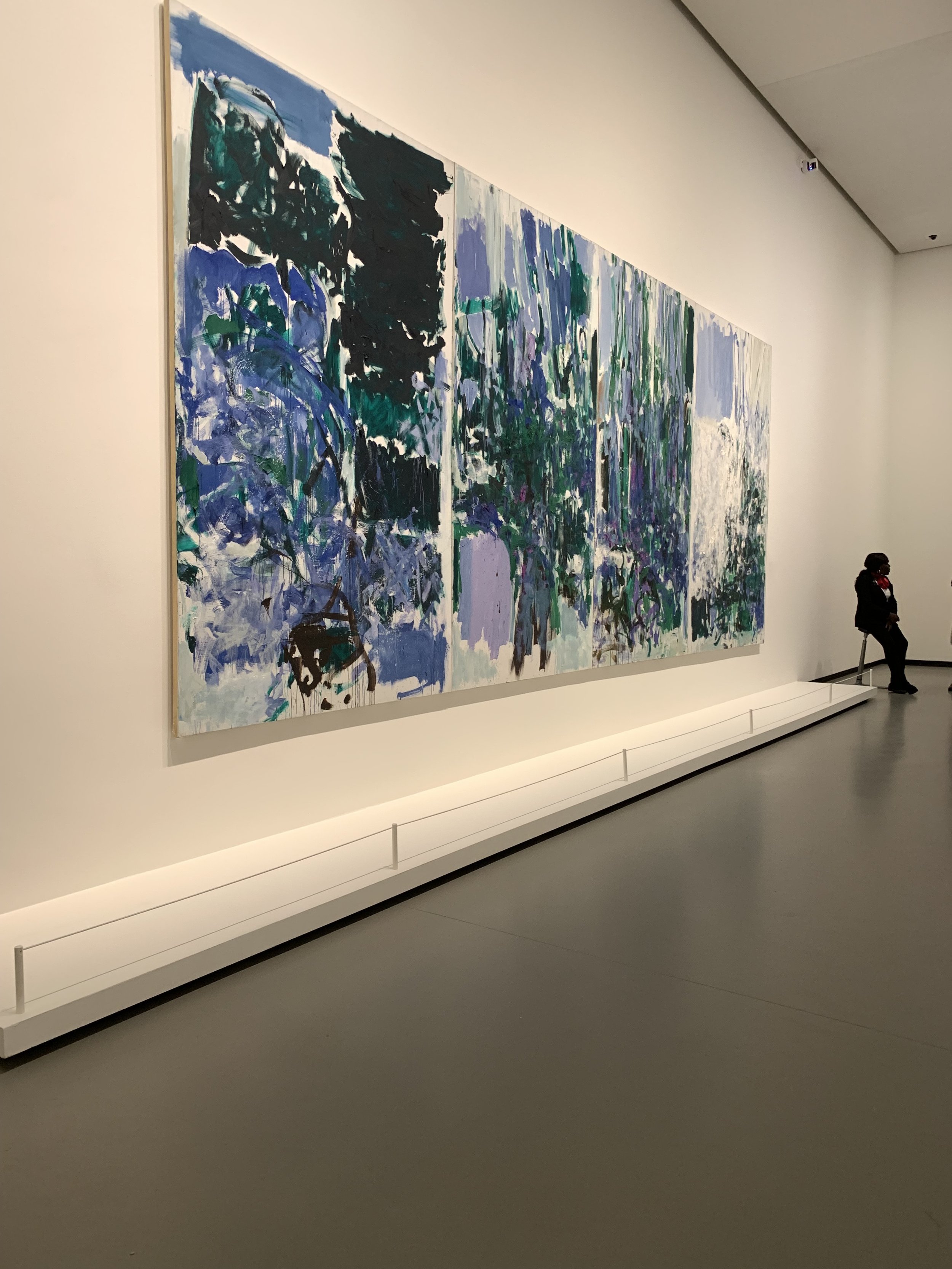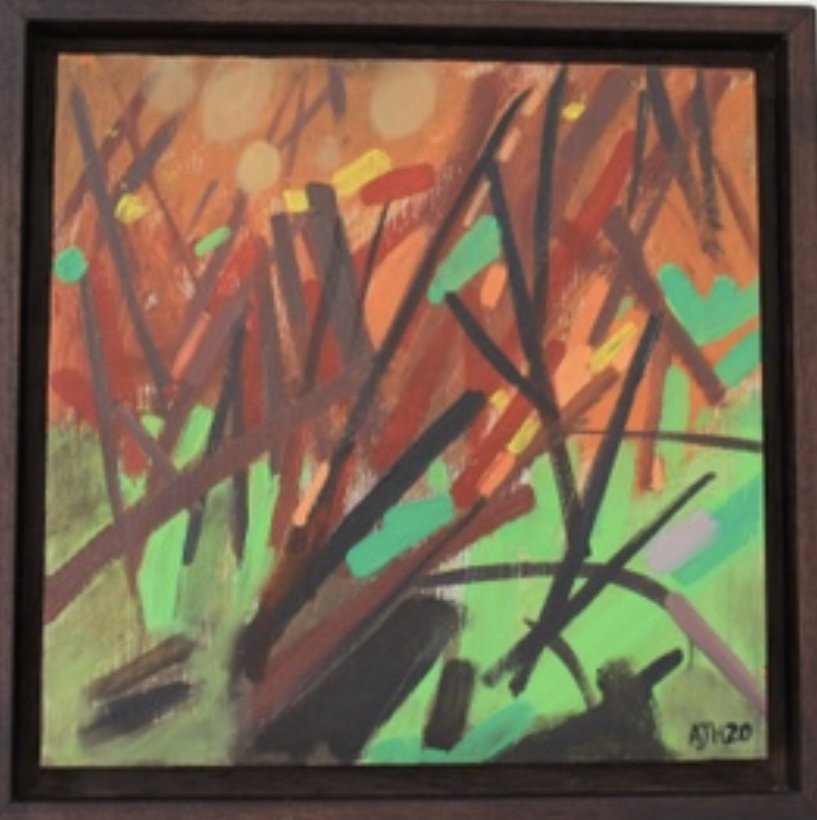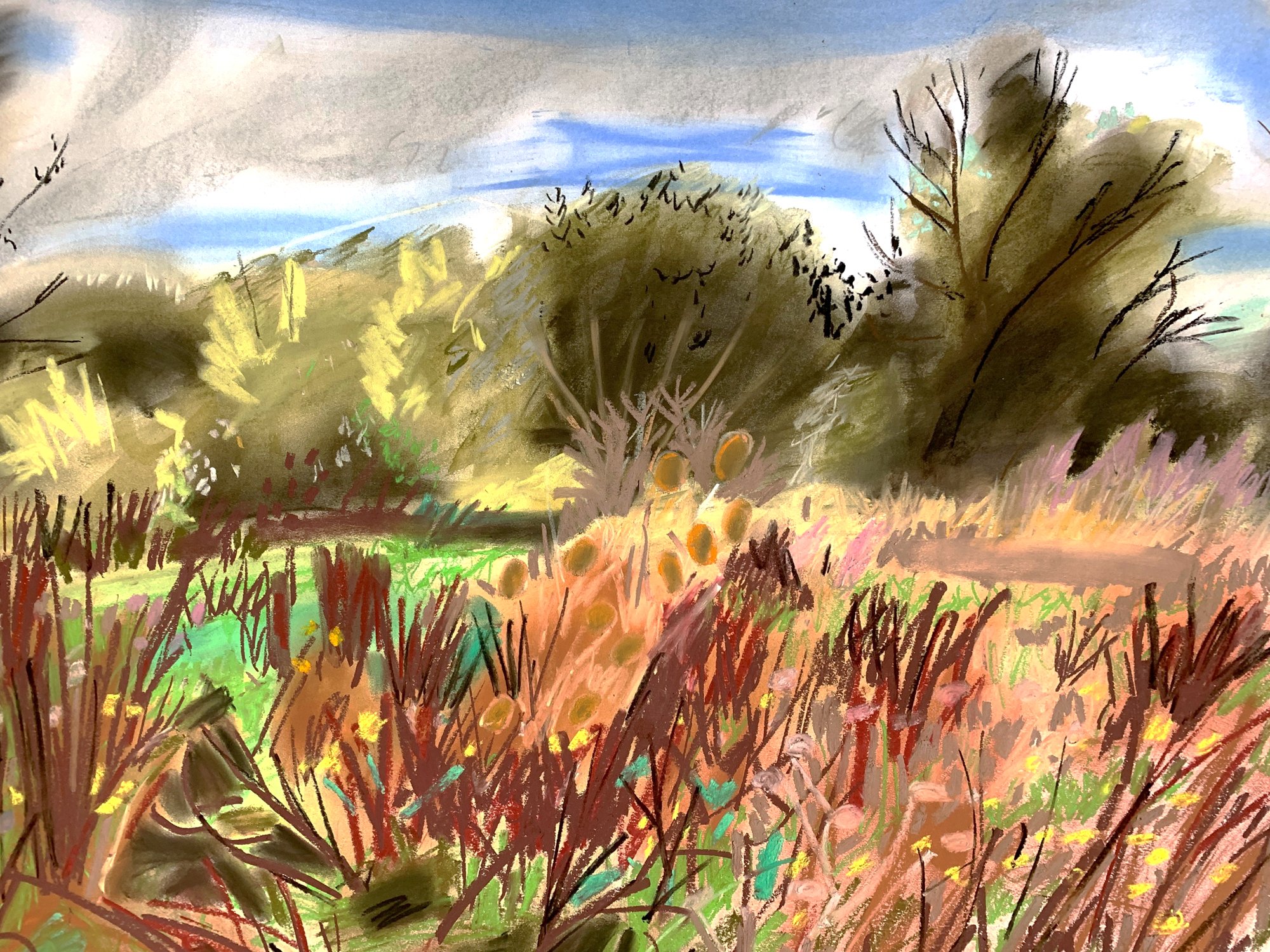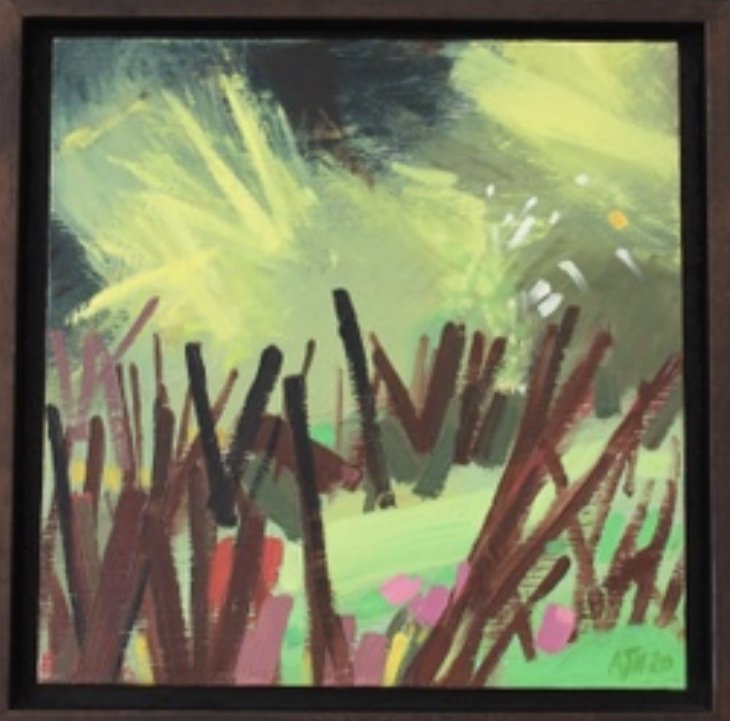Joan Mitchell-Seeing and Feeling
5 reasons to love Joan Mitchell and how her painting influences my art practice.
“Bonjour Julie” 1971 12” x 230” by Joan Mitchell at FLV, Paris 2023
Joan Mitchell's huge fields of fluid brushstrokes and sublime colour have entranced me for years since I first encountered her work as a student at Edinburgh College of Art. I finally had the chance to see her paintings and drawings in person at the Louis Vuitton Foundation in Paris, France in February 2023. “Joan Mitchell Retrospective” is a wonderful chronological journey through her practice and “Monet - Mitchell” is a fascinating show where the paintings of Joan Mitchell are shown alongside and compared to the late “Waterlily” works of Impressionist painter Claude Monet. Exhibition runs until 27th February 2023.
Edrita Fried 1981, 118” x 315” By Joan Mitchell at FLV, Paris 2023
Born in 1925, Joan’s painting was career developed from the American Abstract Expressionist movement in 1950s but she established a unique visual vocabulary rooted in gestural abstraction. She moved permanently to France in 1959 and set up a studio in Vetheuil, north of Paris where she worked until her death in 1992.
There are many aspects of her genius that I admire but here are the top 5!
Expressive Gestural Brushwork
I particularly love the physicality and energy of her painting, the use of gestural brushstrokes has ever changing rhythms creating a choreography of movement and stillness.. Joan seemed to paint with her whole body as well as her mind and heart. She was an excellent ice skater as a younger woman and I’m sure this focus on the precise, language of physical movement came very very naturally to her. In “Edrita Fried” above the momentum of the brush strokes swell up and across the painting, breaking like a wave in the far right hand panel.
“Ploughed Field” 1971 112” x 213” By Joan Mitchell at FLV, Paris 2023
Large Scale Canvases Draw You Into Their Space
With paintings such as “Ploughed Field” shown above Joan far exceeded the scale of her earlier paintings and the large polyptych became her signature format. She often only had space to work on two panels at a time in her studio so the finished piece could not easily be viewed in its entirety. I love the engulfing effect of these very large paintings. The scale fills your entire vision and draws you into their space.
As a student at Edinburgh College of Art we had the luxury of high ceilings and soaring walls to work on so working on a large scale was never a problem and I enjoyed emulating the monumentality of these multi panelled pieces.
I learnt about Joan Mitchell’s work via illustrated books and spent time working in the South of France where the melting warm colours were a contrast to the cold tones of Scotland, and brought me closer to Joan’s experience of colour.
The piece below is inspired by a late afternoon walk through a grassy meadow in Southern France. The grasses rippled like water in the breeze and the sun glinted on the shiny foliage. To find out more click the link HERE.
“Summer Afternoon” 214cm x 245cm By Jane Hindmarch after Joan Mitchell
Emotive Use Of Colour
Joan’s expressive use of colour harmonies have a tremendous emotional scope. Sometimes, with great discipline, colours are limited to an almost monochrome palette and at other times she explores the light and colour of landscape in full technicolour. By modulating warm and cool tones she draws areas of the painting forward and back within the spatial plane of the painting. Whether evoking verdant vegetation, distant landscape or “l’heures des bleus” - the light between night and day as in “ Quattor II for Betsy Jolas” below; colour is the material through which she interprets nature.
“Quattor II, For Betsy Jolas “1976 110” x 268” By Joan Mitchell at FLV, Paris 2023
Evocation Over Description
Joan Mitchell’s paintings are evocations of nature based on memories and experienced landscape. She famously said: “I carry my landscapes around with me”, “Painting is a way of stopping time and holding on to the sensation of the moment forever”.
“My paintings repeat a feeling about Lake Michigan or water, or fields… it’s more like a poem…and that’s what I want to paint” - Joan Mitchell in film “Joan Mitchell Portrait Of An Abstract Painter”
Poetry played an important role as inspiration in Joan Mitchell’s work. Many of her paintings are inspired by the words of contemporary poets and friends such as Samuel Beckett and Frank O’Hara or by older masters like Wordsworth and Rilke. Equally music and the musical compositions of friends are subjects for paintings such as Gisele Barreau’s “Two Pianos”or Betsy Jonas’s in “Quattor For Betsy Jonas II” seen above.
The examples below of some of my smaller paintings (approx 25 cm x25cm) very much seek to express the feeling evoked from the landscape rather than the image of a particular place. These “Micro Landscapes” take a close up look at the natural habitat throughout the changing seasons, reflecting the ebb and flow of our own lives.
More information on the pieces can be found HERE.
Eloquence Beyond Words
Joan Mitchell said, “For many people seeing is not a natural thing…They see only learned cliches. They remain caught up in the language”. Her paintings distinctly communicate that the sensation of seeing is directly connected to the experience of emotions. This premise is also key to my own art practice.
Whilst painting “La Grande Vallee series, one of which is shown below, Joan was suffering the bereavement of her sister and another close friend . The Grande Vallee was a real place where they had played as children. Joan imagined the place “A vague green and blue terrain with a river and a stream” as an idyllic paradise infused with nostalgia, a peaceful resting place for her sister’s and friends spirit. I admire that she was able to channel these powerful and painful emotions into such a positive and generous outcome, offering us all a place of tranquillity and a celebration of life.
“La Grande Vallee XIV” (For a Little While) 280cm x 600cm by Joan Mitchell at FLV, Paris 2023
The Exhibition at the Louis Vuitton Foundation, Paris closes on 27th February 2023.
In UK you can see “Chord II” by Joan Mitchell at Tate St Ives, Cornwall. Tate Britain have 10 artworks in their drawings and prints collection by Joan Mitchell available to be viewed by appointment.
See more of my paintings HERE!
References - Joan Mitchell by Judith E Bernstock & Information Fondation Louis Vuitton
